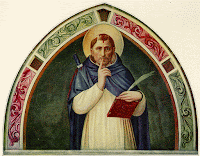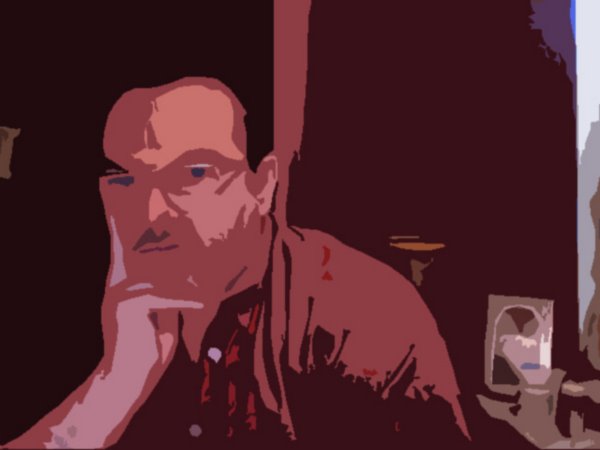THE LAY OF WALSINGHAM
by Dominic de Souza
A quiet woodland dale in Norfolk harbours what used to be the thriving mediaeval shrine of Our Lady of Walsingham. Fathers and sons, mothers and daughters, kings and commoners travelled to its holy soil in the spirit of pious pilgrimage. When came the twelfth century of the Year of Our Lord, Walsingham was the greatest shrine in the world in honour of Our Lady. It ranked among the four greatest shrines at Jerusalem, Rome and Compostella.
At the time, the Seljuk Turks had seized control of the Holy Lands by violence. Christians found it virtually impossible to reach the hallowed places. Although the pilgrimage to Rome was seen as the most beneficial, it was much safer and simpler for royalty, nobles and ordinary folk to follow the `Walsingham Green Way' and visit the national Shrine. Walsingham became so famous throughout the lowly hovels and majestic castles of Merry England that, according to the English Chronicler, Holinshead, practically everyone visited the shrine at least once in their lives.
This tale begins in the eleventh century, five years before William the Conqueror led his Norman conquest into England. The Lord of the Manor and Earl of the Marches of Walsingham had just died. He left his Saxon wife, Richeldis de Faverches, to care for his son Geoffrey. Richeldis nurtured a deep faith in God and devotion to the Blessed Virgin, and was well known for her good works in care and generosity.
The `Walsingham Ballad', the earliest surviving record of the Shrine's foundation (c. 1465), tells us how Our Lady graced Richeldis with a vision in 1061 AD. The noblewoman was spiritually transported to the town of Nazareth. With holy awe, Richeldis beheld the dwelling where the great Mystery of the Annunciation had taken place and where the holy family had lived for nearly thirty years of Our Lord's life. Our Lady intimated that She wished this holy house to be rebuilt in England:
"Do all this unto my special praise and honour. And all who are distressed or in need, let them seek me here in that little house you have made me in Walsingham. To all that seek me there I will give my help. And there at Walsingham in this little house shall be held in remembrance the great joy of my salutation when Saint Gabriel told me that through humility, I should become the Mother of the Son of God."
From this vision of Our Lady comes the enduring devotion of the English to the Annunciation, 'the root of mankind's gracious redemption'.
At the spot where the vision was seen, a lively spring gushed forth full of healing properties, thus dispelling any doubts in Richeldis' mind. Instantly filled with zeal, she gathered workers together and organized the materials according to the specifications Our Lady had given. No attempt was made to follow the Palestinian style of dwellings. The structure was designed as a wooden, Saxon building of rectangular shape, with four small turrets and a crowning central tower of wood.
According to the legend, Our Lady appeared to her three times, each time confirming her request. But Richeldis was faced with a dilemma: where to place it? Tradition tells us that one morning her question was answered: she was alerted to a miracle in a field close by. A heavy dew had fallen during the night. Nothing was dry, except two roughly equal patches of grass the exact size of the house. Richeldis chose the patch closer to a well, and the workers went to work with a will.
By the end of the first day, they returned dispirited and disappointed. No matter how hard they tried, the walls of the Holy House refused to fit as they should. Nothing worked. Richeldis was too troubled to sleep, and she spent all night seeking heavenly guidance through a vigil of prayer.
During the night, strains of music entered her room. Entranced, she followed the singing and found it led her to the construction outside. To her delight and wonderment, she was just in time to glimpse the sight of angels fleeing a small five-pointed building. The Holy House had been completed to perfection.
In the morning, the incredulous masons and carpenters agreed that it had been miraculously built. It was as 'solid as a rock' on its new foundations, for the angels had also moved it two hundred feet away to the other patch of dry grass.
Skilled craftsmen were commissioned as swiftly as possible to carve a statue of Our Lady. In the guise of mediaeval statuary, Our Lady was enthroned on the Throne of Wisdom and crowned as the Queen of Heaven and Earth. She herself was a throne for the Christ-Child, Who was represented holding out the Gospels to the world. Her right hand pointed to Him, and He extended His arm in a double gesture of blessing and protection of His Mother. Each part of the statue was rich in symbolism, such as the seven rings on the throne standing for the Seven Sacraments, which Henry VIII defended so gallantly centuries later, and the flowering lily-scepter which she held in her right hand. It symbolised her Perpetual Virginity, and, in the teachings of the Cistercian saint, Bernard of Clairvaux, that She is the Flower of the Rod of Jesse.
Marvellous miracles, cures and answers to prayers followed, all carefully recorded by the Augustinian monks and Grey-Friars, who settled themselves in a Franciscan friary in the village. Pilgrims came to the Shrine to pray and sprinkle themselves with the holy waters.
Richeldis passed away in 1145, leaving the estates to her son. But the Lord Geoffrey de Faverches burned with a desire to take part in the Second Crusade and to see the true Holy House of Nazareth for himself. He departed, leaving the Holy House and all its grounds to his chaplain, Edwin. He instructed Edwin to establish a religious order to care for the chapel of Our Lady.
Edwin brought in the Augustinian Canons who vastly improved the condition of the shrine. Five years later, the canons built a priory next to the Holy House and they stood side by side for centuries, until the Shrine was encased in a stone building for its own preservation. Soon it could be entered only by a door from within the candle-lit church.
Devotion and popularity increased under the wealthy patronage of royalty. Each king from Richard the First to Henry the Seventh came to pay homage. Two hundred years later, the canons erected a much larger priory, the ruins of which still can be seen to this day.
A final pilgrim chapel was built along the Walsingham Road in 1340, a full mile from the Shrine. It was called the 'Slipper Chapel' and dedicated to St Catherine of Alexandria, the patroness of pilgrims. Her tomb lies in the monastery on Mount Sinai, within the Basilica of the Annunciation. Pilgrims would remove their shoes at the chapel and walk the Holy Mile of Walsingham barefoot. In this way, kings, nobles and ordinary folk entered England's Nazareth to worship their heavenly King and Queen together with their subjects.
In his earlier years as the Fidei Defensor, Henry VIII frequently visited the Shrine. He made many trips to plead with Our Lady for a male heir with his wife and queen, Catherine of Aragon.
In Europe, wars and death brooded on the horizon as the enemies of Christendom plotted its destruction. Martin Luther rose in Germany as a 'reformer', slandering the Pope and condemning all rights of hierarchy and order.
England was not to remain merry for long. In 1538, twenty years after his last visit, Henry VIII saw to the proclamation of his Oath of Supremacy, thereby tearing England from the Holy See of Rome. The Protestant Revolution exploded on the continent. Needing funds, Henry turned and crushed any opposition from the monasteries and religious orders. Walsingham was one of the first to capitulate to the king's commands, and the canons who surrendered the Walsingham lands were awarded generous pensions. Only two canons refused. They were promptly martyred.
But Henry and Cranmer were not satisfied. Accusing the shrines of idolatry, the soldiers of the king pillaged the holy places of England and Wales, carting the statues and sacred articles back to London. In 1538, military divisions were sent into Walsingham to destroy it. The canons and Grey-Friars tried to defend the shrine, desperately pleading their immunity. All in vain. The priory was torn down, the buildings ravaged. The monks and canons who continued to resist were hung, drawn and quartered on a field now known as Martyr's Field.
Bitter, bitter, O to behold The grass to grow Where the walls of Walsingham So stately did show. (The Wrecks of Walsingham, attributed to St. Philip Howard)
Together, Henry and Cranmer caused the gruesome deaths of thousands of Catholics. The English revolution was forced upon the people in a reign of terror, and as a result of Luther's pervading influence, Marian devotion waned. The revolt mounted. Catholicism fled underground in England, the possession of the shrine passing discreetly from one family to another.
"The images of our Lady of Walsingham and Ipswich were brought to London, with all the jewels that hung about them, and diverse other images both in England and Wales, whereunto any common pilgrimage was used, for avoiding ‘idolatry’, all of which were (publicly) burned by Thomas Cromwell." John Stow, 1538 AD.
Christendom, gutted by confusion and heresy, struggled to withstand its enemies of both soul and body. Catholics held fast to the ineradicable promise of Christ whereby the gates of hell would never prevail against the Church.
Weep, weep, O Walsingham Whose days are nights, Blessings turned to blasphemies, Holy deeds to despites. Sin is where Our Lady sat, Heaven turned into hell, Satan sits where Our Lord did sway, Walsingham, oh farewell! (The Walsingham Lament, anonymous Elizabethan ballad)
Henry died in 1547, bereft of the smile of the Holy Lady of Walsingham whose guidance he had so often sought.
Nothing remained of the razed shrine. Picturesque ruins blackened with age, wood softened and rotted. The Slipper Chapel deteriorated into dusty disuse, and took on many roles over the tumultuous centuries. It became a cow-shed, a forge, a poor-house, a cottage.
But then, hope rekindled and Our Lady returned like the Morning Star.
Just as the Shrine began with a wealthy woman, its restoration also began with another wealthy woman, Charlotte Boyd. In 1863, seventy eight years after the Act of Emancipation in England, she took interest in the derelict wreck of the Slipper Chapel and was able to persuade the Lee Warner family to sell all they would give. She hired architects and masons from Cambridge to rebuild the chapel, and in 1894, converted from Anglicanism to Roman Catholicism, quickly afterward restoring it as a place of Roman Catholic devotion.
She appointed it as a place 'of prayer and penitence for unity in England'. Before she died in 1906, she donated it to the Benedictines of Downside abbey. They cared for it until 1934, when it was given to the Diocese of Northampton.
The Anglicans did not remain far behind. In 1921, Father (Alfred) Hope Patten ignited Anglican interest and was inspired with the idea of making a new statue, based on the seal of the medieval priory. Before his death, a new Holy House was built and encased within a pilgrimage church, just as in times of old.
Charlotte Boyd's efforts were the catalysts that re-established pilgrimages to Our Lady of Walsingham. Under the approval of the Pope in 1934, the bishops of England and Wales designated Walsingham as the National Shrine of Our Lady. Twenty years later, the papal delegate, Archbishop O'Hara, crowned the new statue of Our Lady before a crowd of tens of thousands.
Walsingham once again embraces thousands of pilgrims who journey from the farthest reaches of the earth to pray at the feet of Our Lady. The Shrine is full of memories of the olden days when Richard II gave England to Her as Her dowry in Westminster, 1381 AD, days when reigning Christendom was once nourished by the graces of the Queen of Heaven.
The final verse of Richard Pynson's Ballad of Walsingham goes as follows:
Walsingham, 'in thee is built New Nazareth' Where shall be held in a memorial The great joy of my salutation, First of my joys, their foundation and origin Root of mankind's gracious redemption, When Gabriel gave me this news: To be a Mother through humility And God's Son conceive in virginity. O England, you have great cause to be glad For you are compared to the Promised Land, Zion You are called in every realm and region The Holy Land, Our Lady's Dowry. In you is built new Nazareth, A house to the honour of the Queen of Heaven And Her most glorious Salutation When Gabriel said at Old Nazareth, Ave, this same joy shall here be daily and for ever remembered. … O gracious Lady, Glory of Jerusalem Cypress of Zion and joy of Israel Rose of Jericho and star of Bethlehem O glorious Lady our asking not repel In mercy all women ever thou dost excel Therefore blessed Lady grant thou thy great grace To all that thee devoutly visit this place. Amen.
 Priest
Priest


















